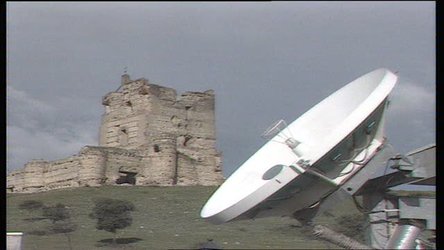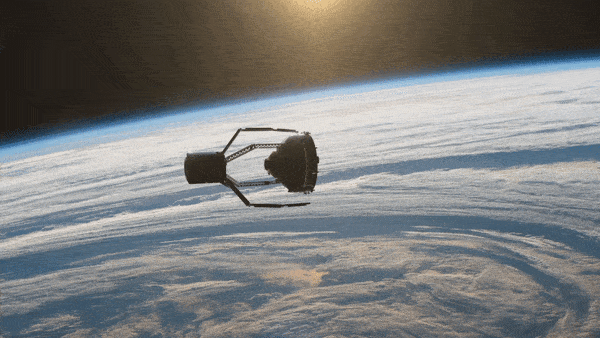Accept all cookies Accept only essential cookies See our Cookie Notice

About ESA
The European Space Agency (ESA) is Europe’s gateway to space. Its mission is to shape the development of Europe’s space capability and ensure that investment in space continues to deliver benefits to the citizens of Europe and the world.
Highlights
ESA - United space in Europe
This is ESA ESA facts Member States & Cooperating States Funding Director General Top management For Member State Delegations European vision European Space Policy ESA & EU Responsibility & Sustainability Annual Report Calendar of meetings Corporate newsEstablishments & sites
ESA Headquarters ESA ESTEC ESA ESOC ESA ESRIN ESA EAC ESA ESAC Europe's Spaceport ESA ESEC ESA ECSAT Brussels Office Washington OfficeWorking with ESA
Business with ESA ESA Commercialisation Gateway Law at ESA Careers Cyber resilience at ESA IT at ESA Newsroom Partnerships Merchandising Licence Education Open Space Innovation Platform Integrity and Reporting Administrative Tribunal Health and SafetyMore about ESA
History ESA Historical Archives Exhibitions Publications Art & Culture ESA Merchandise Kids Diversity ESA Brand Centre ESA ChampionsLatest
Space in Member States
Find out more about space activities in our 22 Member States, and understand how ESA works together with their national agencies, institutions and organisations.
Science & Exploration
Exploring our Solar System and unlocking the secrets of the Universe
Go to topicAstronauts
Missions
Juice Euclid Webb Solar Orbiter BepiColombo Gaia ExoMars Cheops Exoplanet missions More missionsActivities
International Space Station Orion service module Gateway Concordia Caves & Pangaea BenefitsLatest
Space Safety
Protecting life and infrastructure on Earth and in orbit
Go to topicAsteroids
Asteroids and Planetary Defence Asteroid danger explained Flyeye telescope: asteroid detection Hera mission: asteroid deflection Near-Earth Object Coordination CentreSpace junk
About space debris Space debris by the numbers Space Environment Report In space refuelling, refurbishing and removingSafety from space
Clean Space ecodesign Zero Debris Technologies Space for Earth Supporting Sustainable DevelopmentLatest
Applications
Using space to benefit citizens and meet future challenges on Earth
Go to topicObserving the Earth
Observing the Earth Future EO Copernicus Meteorology Space for our climate Satellite missionsCommercialisation
ESA Commercialisation Gateway Open Space Innovation Platform Business Incubation ESA Space SolutionsLatest
Enabling & Support
Making space accessible and developing the technologies for the future
Go to topicBuilding missions
Space Engineering and Technology Test centre Laboratories Concurrent Design Facility Preparing for the future Shaping the Future Discovery and Preparation Advanced Concepts TeamSpace transportation
Space Transportation Ariane Vega Space Rider Future space transportation Boost! Europe's Spaceport Launches from Europe's Spaceport from 2012Latest
Olympus: Back from the dead
An account of the rescue of Olympus in 1991, following loss of signal. The video includes the following:
0:12 It is in the innovative nature of space technology that problems arise and remarkable solutions are sometimes found. The story of the rescue of Olympus is a classic of the genre.
0:29 Olympus, the world’s largest and most powerful 3-axis stabilized communication satellite was launched into a geostationary orbit by Ariane 12 July 1989., and has been in continuous operation ever since.
0:57 Animation of Olympus being in space . On the 29 May 1991, the satellite lost its Earth present signal and switched automatically to a emergency sun acquisition mode
1:10 Pierre Kaufeler, Spacecraft Operations Manager, ESOC, explains (in French) what happened.
01:38 The emergency sun mode is a safety mode for most 3-axis stabilised spacecraft. It is normal that the spacecraft goes into this pre-programmed safety mode in case of a failure. Until this happened Olympus had been in an ordinary geostationary orbit, 36 000 km above the Earth, 19 degrees west longitude. But the satellite problems with its two infrared Earth sensors, which had become unreliable. On 29 May an un-validated operational procedure was used to try to recover from this problem, and the control of the satellite was lost.
2:58 Pierre Kaufeler speaks (in French) explains what happened.
3:41 With the loss of control from Fucino, Italy, the satellite was spinning in such a way that the solar panels were virtually supplying no power. The temperature dropped to minus 60 degrees Celsius. Olympus was effectively dead in space.
4:04 Alan Smith, Olympus Flight Operations Director, ESOC: The spacecraft was out of control, the batteries were flat, the spacecraft was tumbling with one revolution every 90 seconds. We were not able to tele command the spacecraft and we did not get any telemetry from it.
4:21 Also it was beginning to move out of its geostationary orbit moving circa 5 degrees a day, out of range of the Fucino tracking station.
4:46 Alan Smith, continued: With the spacecraft drifting 5 degrees per day, it would soon be out of contact with out ground station Fucino. Everybody’s feeling were quite pessimistic, and the change for recovery was not very high.
5:12 Jean-Marie Luton, ESA Director General (DG), instructed ESOC to do whatever was possible to recover the spacecraft. But never before in the history of space had such a rescue been attempted.
5:39 David Wilkins, Chief of Operations for the Olympus Recovery Mission, ESOC: ESOC took over the recovery task following the issue of the DG’s instructions. Wilkins explains all the difficulty, e.g. with very little power and only sometimes during the day, very little telemetry, and the spacecraft was rotating.
7:35 Felix Garcia-Castaňer, Director of Operations, ESOC: We managed to exercise our corporate agreements with other space agencies, with NASA and CNES in order to use the ground stations in California and in Kourou, and this has been vital in the success of the mission operation. I also must stress the very good cooperation with industry, and this case with British Industry, resulted in the possibility to put together a very good integrated team.
8:55 B y June the recovery plan had been worked out: First getting telemetry data, second shutting down any system not needed to save energy, third getting adequate solar array power to charge the batteries, and forth to stop the spinning.
10:09 On the 19 June came the first indications that the plan might work.
10:14 David Wilkins, we had to wait until 19 June, when we managed to get commands in.
10:35 Olympus started to indicate it had accepted some commands from ESOC.
10:47 Pierre Kaufeler speaks (in French) explains the problematic and how the control of the spacecraft worked out.
11:27 ESOC and ESTEC experts doubled their efforts working long into the night, ignoring weekends. The initial calculations proved correct. By July the sun angle had improved sufficiently to charge the batteries.
11:58 With only limited charge of the batteries, tele command and telemetry start becoming continuous.
12:08 Pierre Kaufeler speaks (in French) explains.
11:45 On the 29 July, the preparation was completed and a series of burn commands were send, to ignite the thrusters to de-spin the satellite, and stop the drifting.
13:08 On 6 August a command corrected the orbit inclination. On 9 August a engine burn reduced the drift to 0.9 degrees. Then on 13 August a final burn repositioned Olympus at 19 degrees east. It was back where it should be.
13:35 Alan Smith explain a bit of the result of the recovery.
14:22 Olympus recovery team had written history by the Olympus recovery.
15:20 The End
-
CREDIT
ESA -
LICENCE
ESA Standard Licence
-
Documentary
-
-
-
-
-
-

SOHO - Back From the Dead

European Communication Satellites

Olympus: Back From The Dead.

Orbital Connections















 Germany
Germany
 Austria
Austria
 Belgium
Belgium
 Denmark
Denmark
 Spain
Spain
 Estonia
Estonia
 Finland
Finland
 France
France
 Greece
Greece
 Hungary
Hungary
 Ireland
Ireland
 Italy
Italy
 Luxembourg
Luxembourg
 Norway
Norway
 The Netherlands
The Netherlands
 Poland
Poland
 Portugal
Portugal
 Czechia
Czechia
 Romania
Romania
 United Kingdom
United Kingdom
 Sweden
Sweden
 Switzerland
Switzerland
























